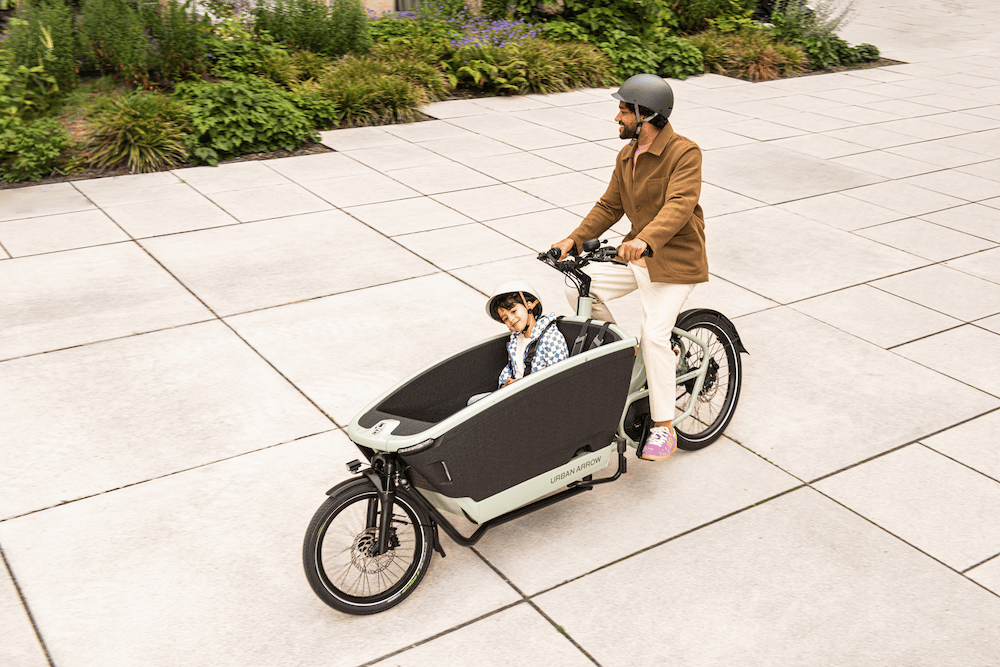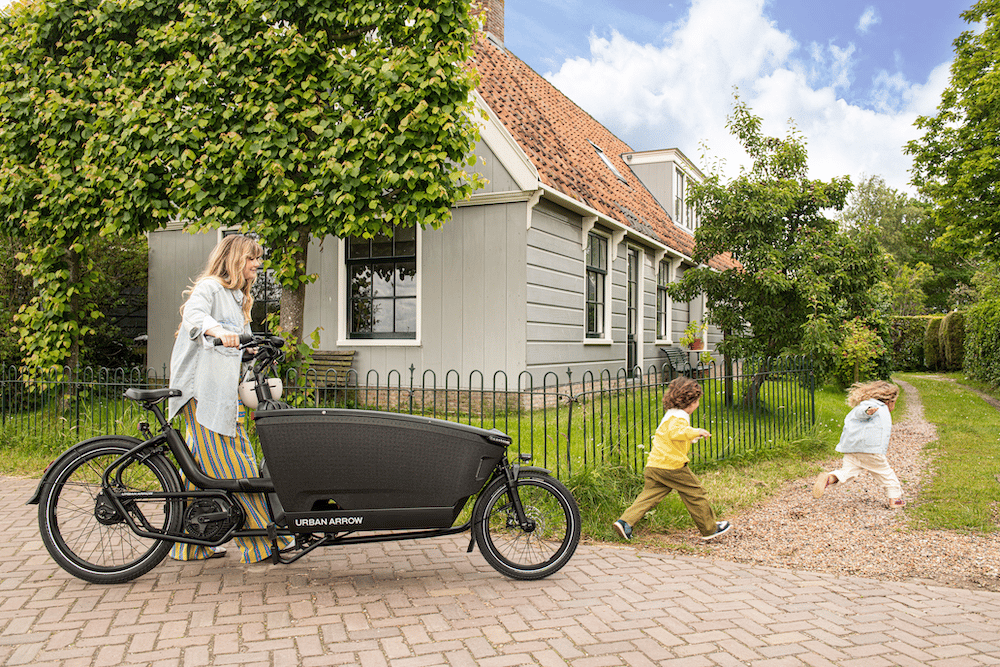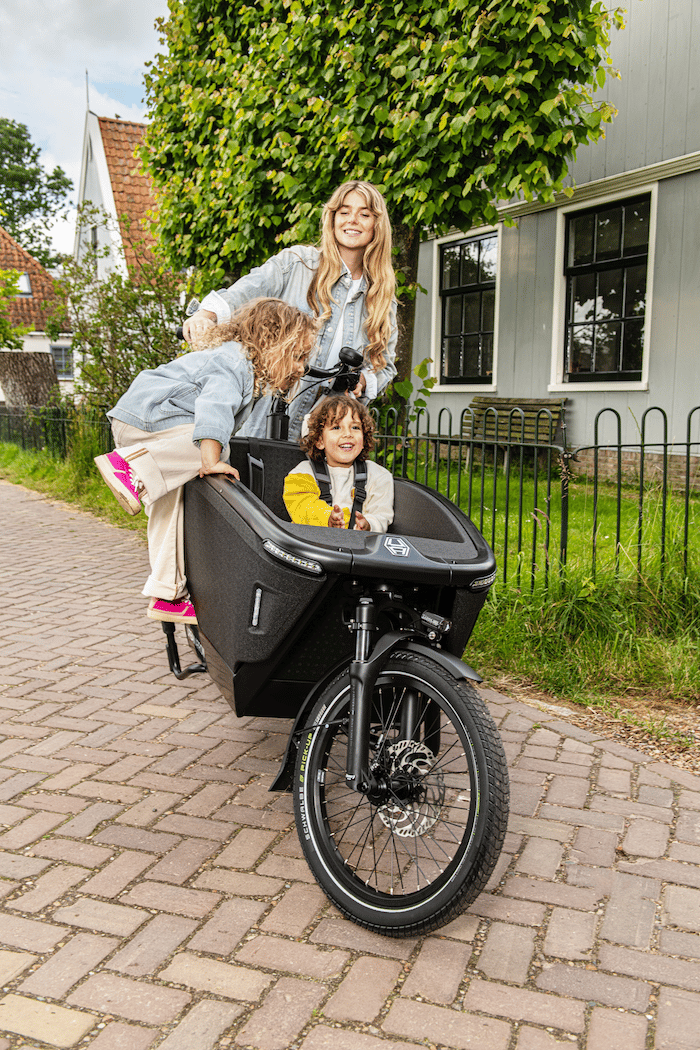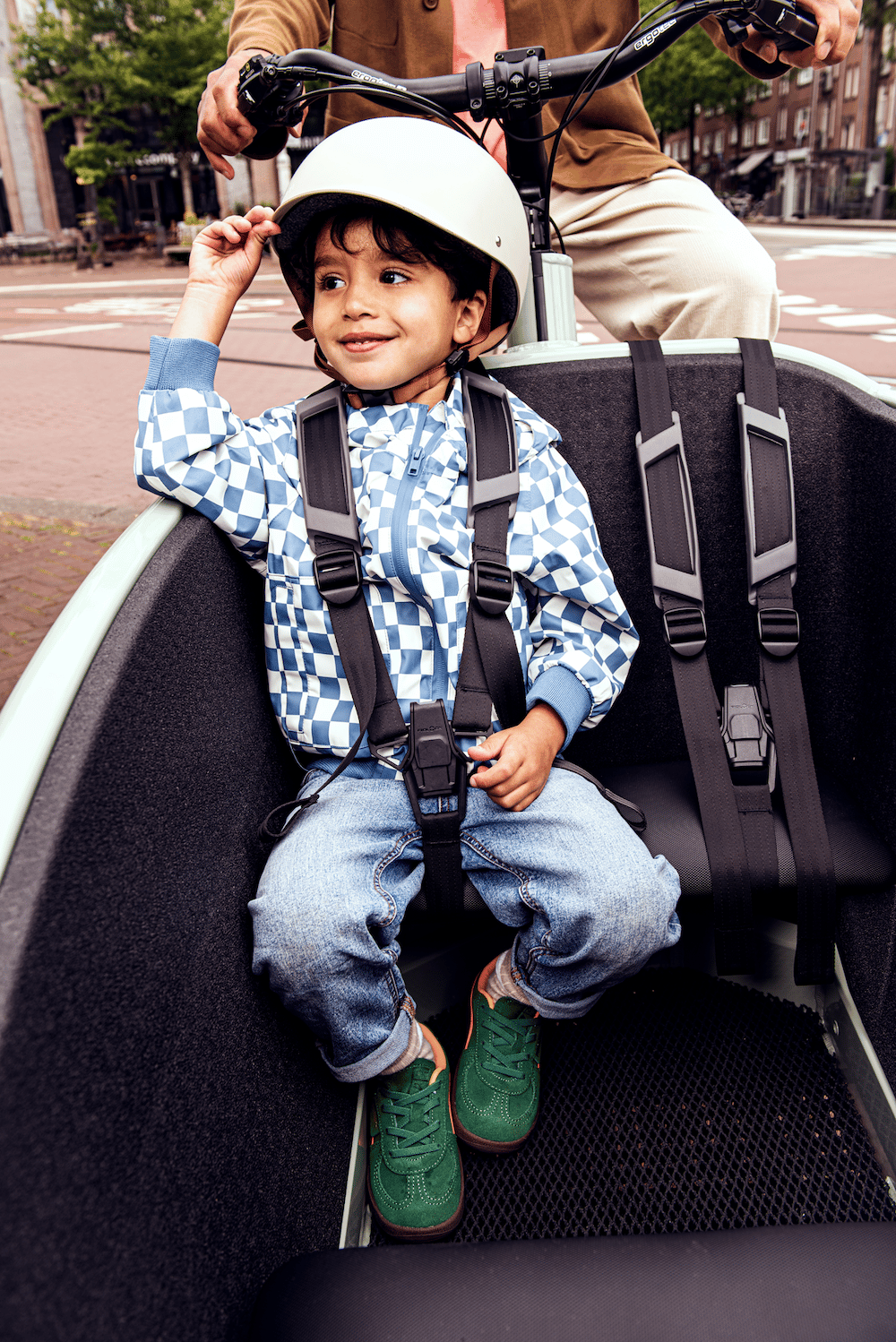
What is a cargo bike? And what can it do? Find out everything you need to know about the differences, areas of use and more here – plus tips for leasing your cargo bike.

Traffic jams, searching for parking spaces, congested roads – anyone who lives in the city is all too familiar with the daily problems of car traffic. Cars often prove to be impractical, time-consuming and expensive, especially for short journeys. Cargo bikes offer an exciting alternative. Whether it's a big weekend shop, the daily trip to nursery or a relaxed ride to the office, modern cargo bikes reliably take on many tasks that used to be possible only by car.
It is therefore hardly surprising that sales figures for cargo bikes have risen sharply in recent years. While the industry association ZIV – Die Fahrradindustrie recorded sales of 75,950 cargo bikes in the 2019 season, an impressive 220,500 cargo bikes changed hands in 2024. The trend shows that more and more families, self-employed people and companies are turning to cargo bikes.
But what exactly is a cargo bike? What models are available? And how can you use one without having to dig deep into your pockets? This article provides answers – and also shows how attractive cargo bike leasing can be.
But let's start at the beginning: a cargo bike – often also called a cargo bike – is a bicycle that has been specially designed to transport larger loads, shopping or even people comfortably and safely. Unlike classic bicycles, the focus here is not on speed or sportiness, but on functionality and suitability for everyday use. A characteristic feature is an extended loading area, which is located either in front of the handlebars, behind the saddle or on a stable platform between the wheels.
Typical features include a particularly sturdy frame, reinforced wheels, a long wheelbase and attachment options for boxes, seats or bags. Many models are also designed to maintain good handling even when fully loaded – whether starting, braking or cornering tightly.
Originally popular in Scandinavian countries and the Netherlands, cargo bikes have now also established themselves in German cities. There are models for a wide range of needs: from compact city cargo bikes and robust tricycles to specialised e-cargo bikes for long distances and heavy loads. This means that cargo bikes are no longer just a niche product, but a serious part of modern urban mobility.




Whether classic or electric, both variants have their strengths. A conventional cargo bike is cheaper to buy, lighter and requires less maintenance. It is particularly suitable for short distances on flat terrain. An electric cargo bike, on the other hand, offers decisive advantages when transporting heavy loads or travelling longer distances and uphill thanks to its motor assistance. Although the purchase price is higher, electric models are particularly attractive when leased. Currently, 84 per cent of all cargo bikes sold are equipped with an electric motor (source: ZIV).

Time for a cargo bike!
Our overview shows that cargo bikes are much more than just a trend – in recent years, they have developed into a practical, sustainable and flexible alternative to cars. And for good reason, because with the right model, transporting children, shopping or running errands for work can be done just as reliably as other transport tasks. Cargo bikes thus tie in directly with what we described at the beginning – they solve the typical problems of traffic jams, searching for parking spaces and crowded streets in a clever way.
The whole thing is made particularly attractive by the option of leasing: with a model from Lease a Bike, you can secure top brands, tax advantages and comprehensive services – without having to make a high initial investment. This makes cargo bikes affordable for everyone – whether families, commuters or businesses. So why stand in traffic jams and waste time?